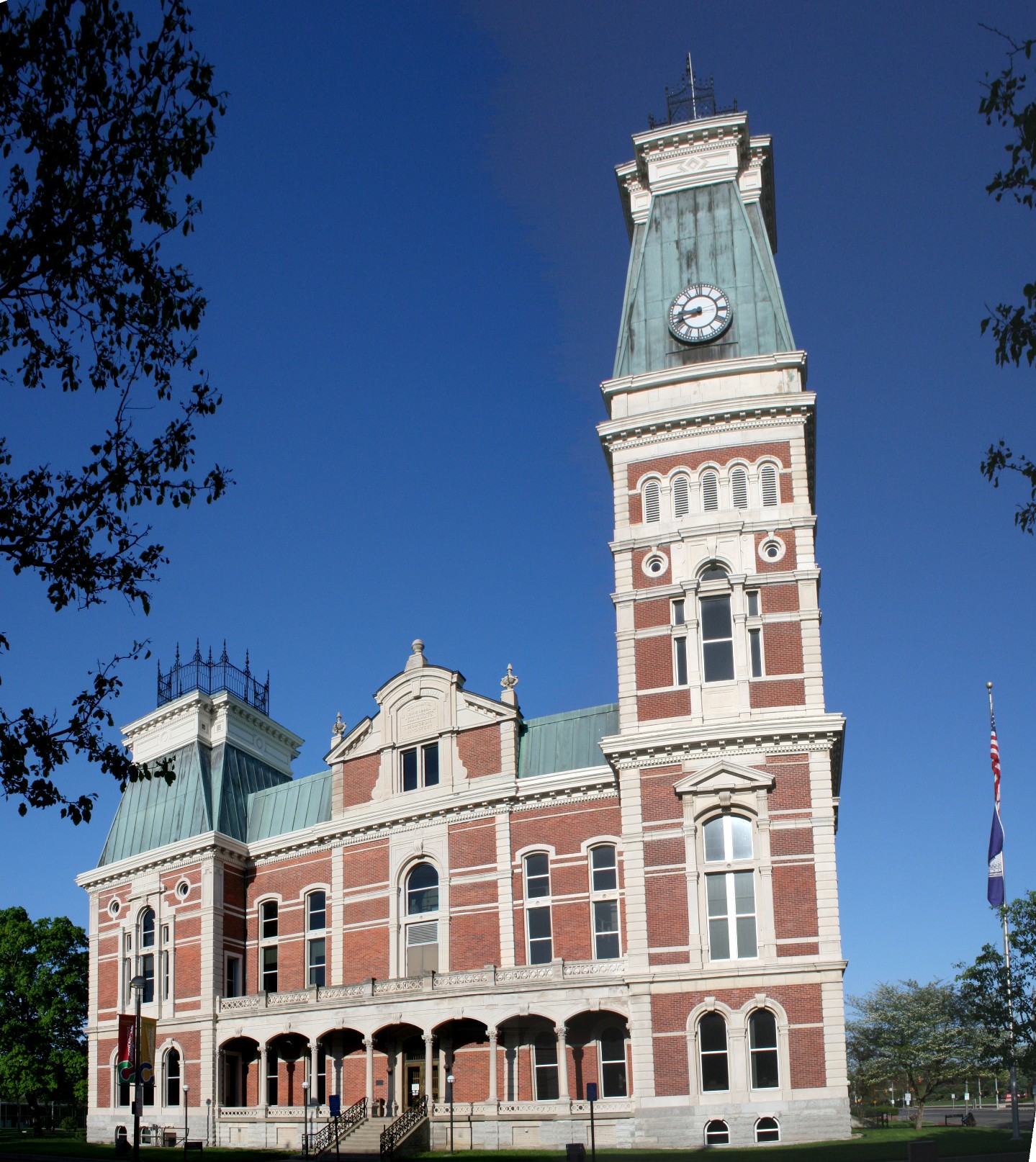The word Oolitic was used as an adjective for Oolitic limestone (derived from the Greek word oolite, meaning eggs and stone). Limestone is a sedimentary rock composed of calcium carbonate, magnesium carbonate and quartz, along with the small shells and eggs left behind when this area was covered by an inland sea. Found immediately north of Oolitic are some of the largest Limestone quarries in the world, many of them in continuous operation since the 1830s.
The adjacent courthouse also uses limestone, but of a different variety.

Second Empire Style courthouse, designed by Isaac Hodgson, was completed in 1874. It's the county's fourth courthouse and constructed of red brick with white limestone trim. The courthouse limestone is Rockford limestone that was quarried from Bartholomew County. Rockford limestone is in the Kinderhook (Mississippian) formation. The color is gray to greenish, mottled limestone. Sometimes nodular and erratic in thickness, usually about 3 ft. thick. It is hard, fine-grained. It is also called goniatite limestone. The Rockford Limestone is a thin dolomitic limestone formation underlying the New Providence Shale and rarely outcrops due to the glacial till cover.
The foundation of the courthouse is rusticated blue limestone. Rustication is found in ashlar masonry; a finished, stone block laid in horizontal courses with mortar. The term rustication applies when ashlar masonry is arranged so that the face of the stone projects out, typically accomplished with deep joints separating each stone block. The face of the block can range in design, but will at least provide some contrast to ordinary stonework. Rusticated masonry can feature a rock-face or a diamond point on the stone face.
To log this earthcache, please send answers to the following questions to my account:
- Describe the look of the columns. Texture, color, size?
- Do you see any fossils in the limestone?
- Compare the limestone on the memorial to the limestone on the courthouse. What is similar? What is different?
Post a picture of yourself (face not required) or a personal item at the limestone.